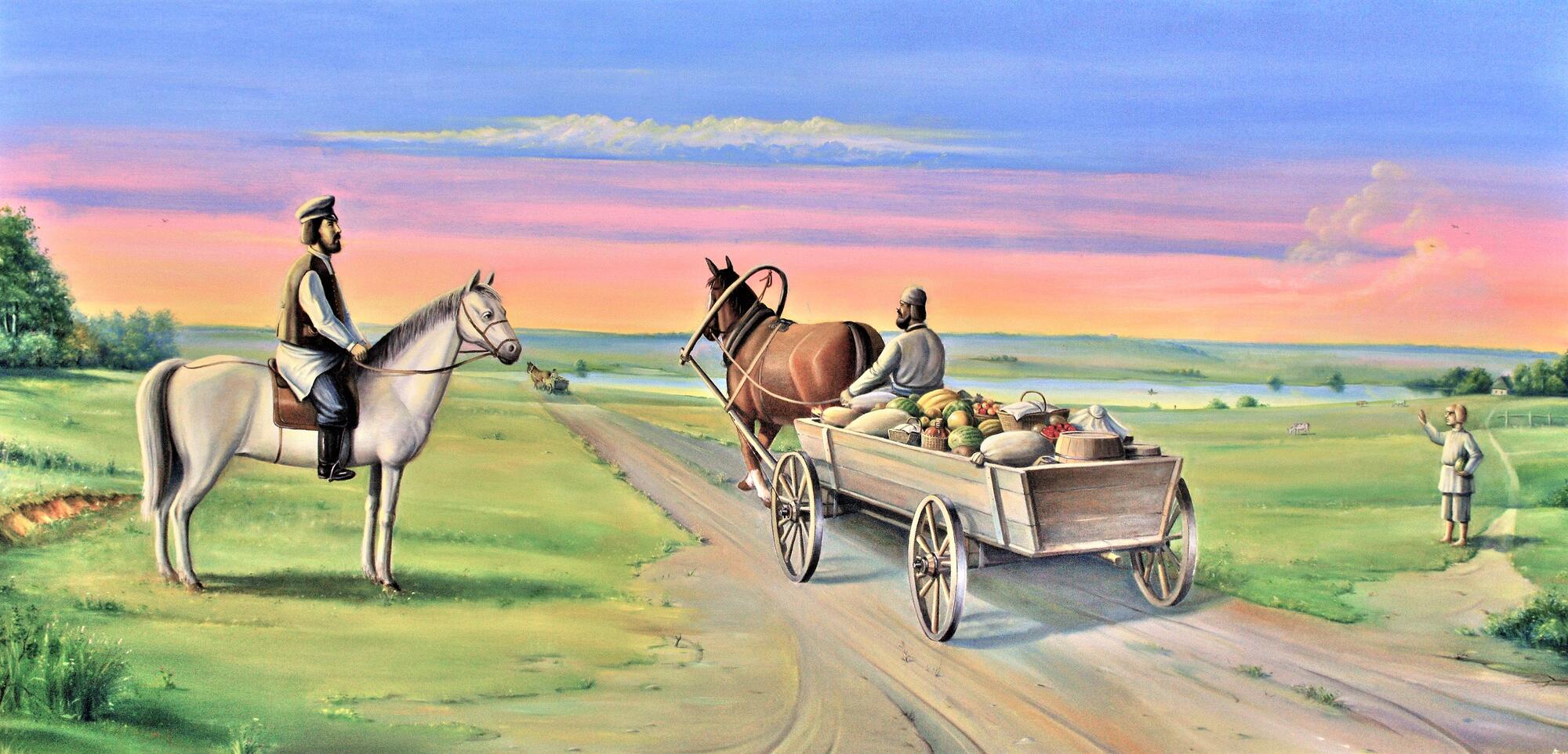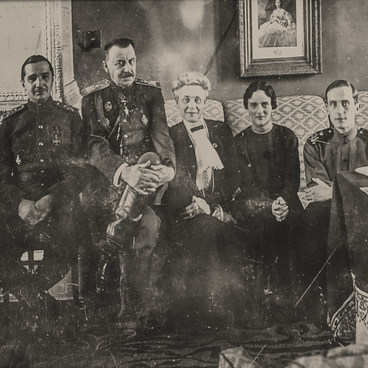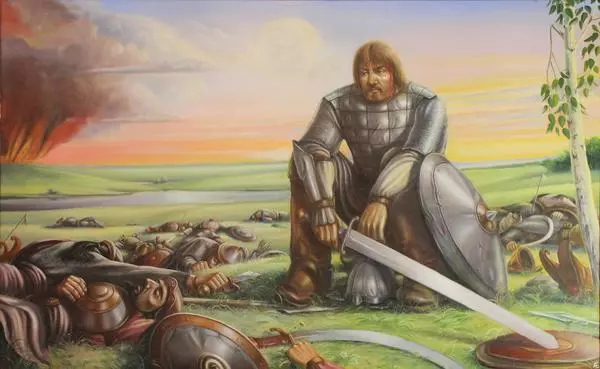The artist Alexander Belikov painted “Carts with Products from Yusupov Palace” specially for the museum exhibition. This is a scene common for Rakitnaya sloboda at the turn of the 18th and 19th centuries: a cart full of vegetables, cereals, oil and honey jars, goes to the Moscow market.
At that time, Prince Nikolay Borisovich Yusupov ran the household. He made a great contribute to the development of the Rakitnaya sloboda — it became the most profitable land among the others of Yusupov.
Sloboda delivered butter, honey, buckwheat and rye flour, hemp seeds, and strong tobacco to the markets. Peasants grew bay leaf in specially built green houses.
They also wove canvas and made hemp threads which were used in carpet production. In 1787, Nikolay Yusupov founded a carpet factory in Rakityanskaya votchina (an East Slavic land estate) and in 1797 — broadcloth production. Broadcloth was used in sewing Officers' and Generals’ greatcoats for the state army. By 1818, there were two carpet factories: the largest factory had 21 trainees and the small one — 7.
To advance the quality of the product, the prince took some high-skilled carpet-makers from the city of Poltava and weavers from Ryazhsk cloth factory. A craftswoman Fedora Trusova also arrived from Moscow to work at a factory. Since then, the production of complex carpets on vertical machine tools began. An old technique was used to sew carpets together from two or three narrow strips. Decoration was made by peasant artists. They used to depict landscapes, architecture, people, birds and Bible plots.
In the 1830s, Nikolay Yusupov decided to develop sheep farming and moved a sheep factory from the village of Ryazhsk: over 2,000 Spanish and Merino sheep. Moreover, the prince ordered Kyrgyz and Dutch goats and sheep.
All the carpets from the factory were delivered to the Moscow office and then to the Moscow and country houses of the prince. Part of them was sent for sale.
At that time, Prince Nikolay Borisovich Yusupov ran the household. He made a great contribute to the development of the Rakitnaya sloboda — it became the most profitable land among the others of Yusupov.
Sloboda delivered butter, honey, buckwheat and rye flour, hemp seeds, and strong tobacco to the markets. Peasants grew bay leaf in specially built green houses.
They also wove canvas and made hemp threads which were used in carpet production. In 1787, Nikolay Yusupov founded a carpet factory in Rakityanskaya votchina (an East Slavic land estate) and in 1797 — broadcloth production. Broadcloth was used in sewing Officers' and Generals’ greatcoats for the state army. By 1818, there were two carpet factories: the largest factory had 21 trainees and the small one — 7.
To advance the quality of the product, the prince took some high-skilled carpet-makers from the city of Poltava and weavers from Ryazhsk cloth factory. A craftswoman Fedora Trusova also arrived from Moscow to work at a factory. Since then, the production of complex carpets on vertical machine tools began. An old technique was used to sew carpets together from two or three narrow strips. Decoration was made by peasant artists. They used to depict landscapes, architecture, people, birds and Bible plots.
In the 1830s, Nikolay Yusupov decided to develop sheep farming and moved a sheep factory from the village of Ryazhsk: over 2,000 Spanish and Merino sheep. Moreover, the prince ordered Kyrgyz and Dutch goats and sheep.
All the carpets from the factory were delivered to the Moscow office and then to the Moscow and country houses of the prince. Part of them was sent for sale.




